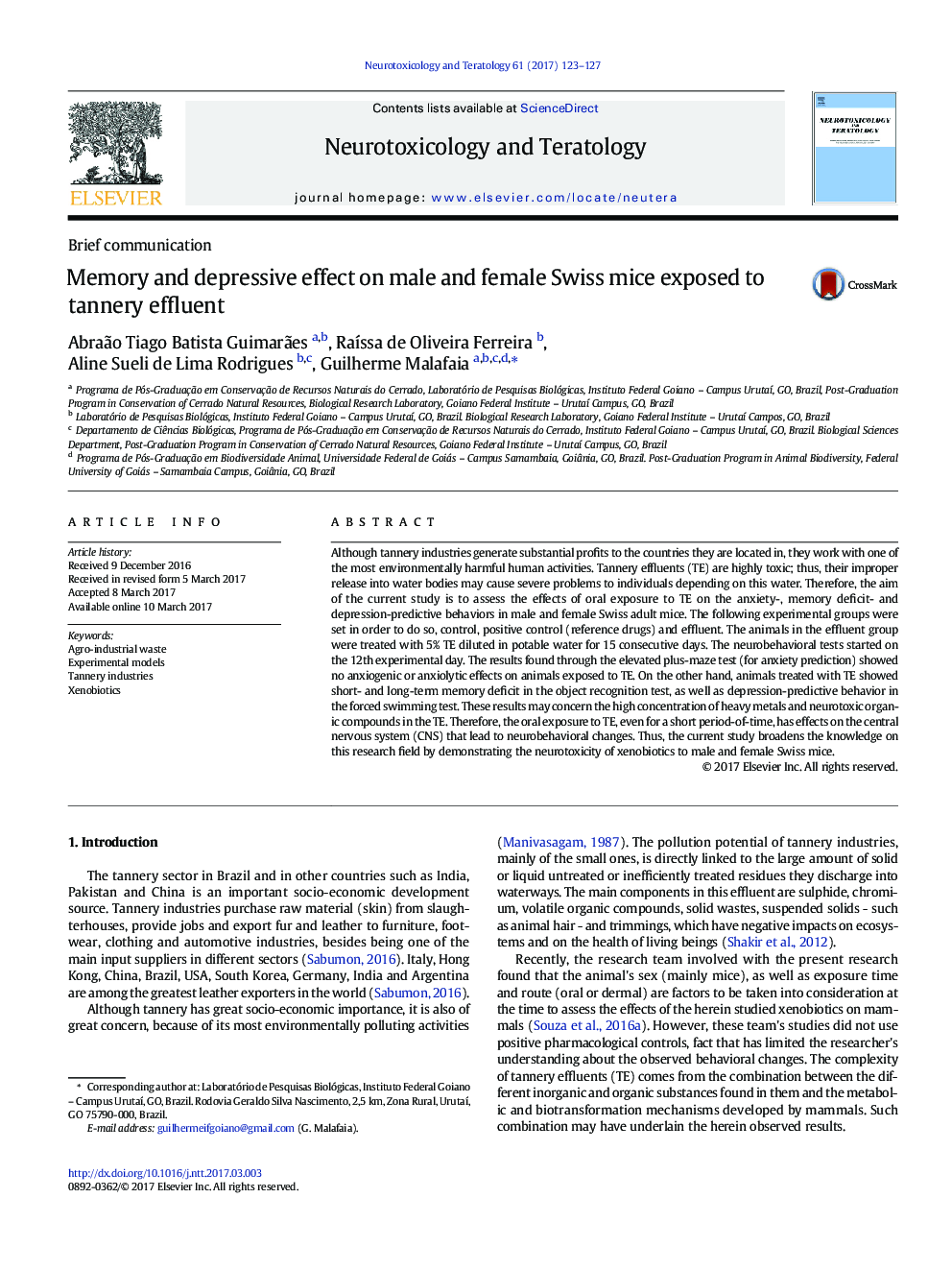| کد مقاله | کد نشریه | سال انتشار | مقاله انگلیسی | نسخه تمام متن |
|---|---|---|---|---|
| 5560997 | 1562075 | 2017 | 5 صفحه PDF | دانلود رایگان |
- Oral exposure to tannery effluent has effects on the central nervous system.
- Exposure to tannery effluent causes behavioral disruptions in male and female mice.
- Memory deficit was observed in male and female mice exposed to tannery effluent.
- Depression-predictive behavior was observed in Swiss mice exposed to tannery effluent.
Although tannery industries generate substantial profits to the countries they are located in, they work with one of the most environmentally harmful human activities. Tannery effluents (TE) are highly toxic; thus, their improper release into water bodies may cause severe problems to individuals depending on this water. Therefore, the aim of the current study is to assess the effects of oral exposure to TE on the anxiety-, memory deficit- and depression-predictive behaviors in male and female Swiss adult mice. The following experimental groups were set in order to do so, control, positive control (reference drugs) and effluent. The animals in the effluent group were treated with 5% TE diluted in potable water for 15 consecutive days. The neurobehavioral tests started on the 12th experimental day. The results found through the elevated plus-maze test (for anxiety prediction) showed no anxiogenic or anxiolytic effects on animals exposed to TE. On the other hand, animals treated with TE showed short- and long-term memory deficit in the object recognition test, as well as depression-predictive behavior in the forced swimming test. These results may concern the high concentration of heavy metals and neurotoxic organic compounds in the TE. Therefore, the oral exposure to TE, even for a short period-of-time, has effects on the central nervous system (CNS) that lead to neurobehavioral changes. Thus, the current study broadens the knowledge on this research field by demonstrating the neurotoxicity of xenobiotics to male and female Swiss mice.
146
Journal: Neurotoxicology and Teratology - Volume 61, May 2017, Pages 123-127
